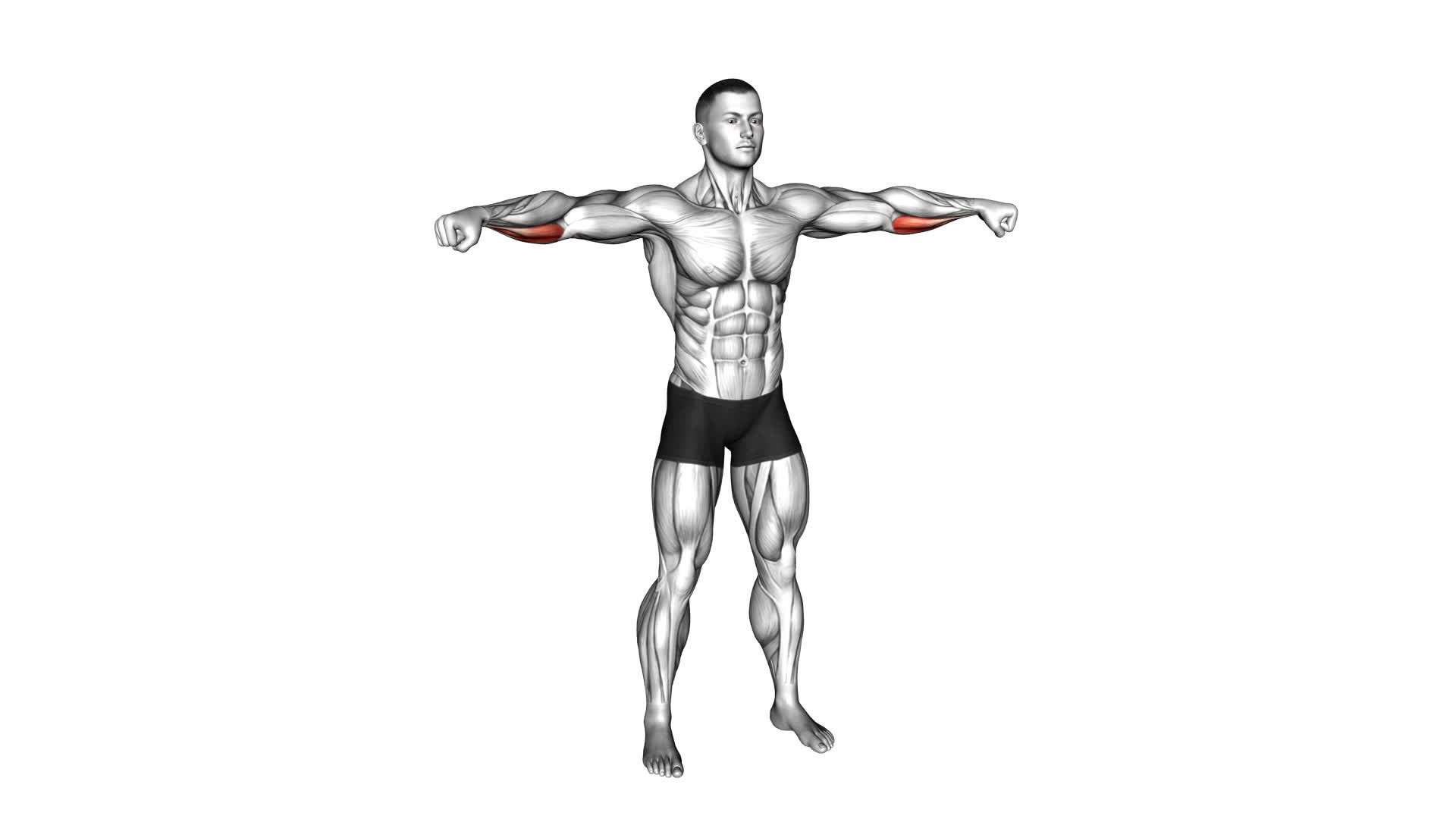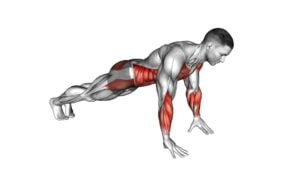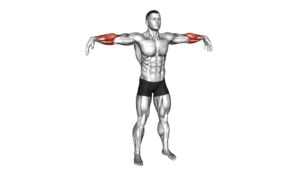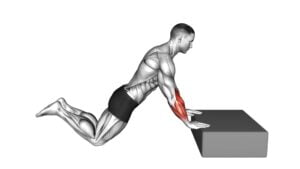Finger Claps (male) – Video Exercise Guide & Tips

Looking to add some intensity to your workout routine?
Watch This Exercise Video
Check out this expert guide on finger claps for men.
In this video exercise guide, you'll learn the proper form and technique for performing finger claps, as well as warm-up exercises to prepare your hands and common mistakes to avoid.
With progression and variations included, you'll have all the tips you need to incorporate finger claps into your workouts.
Let's get clapping!
Key Takeaways
- Finger claps improve grip strength and enhance upper body coordination.
- Finger claps target and strengthen hand and finger muscles, benefiting weightlifting, rock climbing, and everyday tasks.
- Proper form and technique for finger claps involve maintaining a strong and stable position, keeping wrists straight, and varying the clapping positions.
- Warm-up exercises for finger claps, such as finger dexterity exercises and general hand warm-ups, increase flexibility, coordination, and reduce the risk of injuries.
Benefits of Finger Claps for Men
You can experience several benefits from incorporating finger claps into your exercise routine as a man. Not only do finger claps help in improving grip strength, but they also enhance upper body coordination. Grip strength is crucial for performing various exercises and activities, such as weightlifting, rock climbing, and even everyday tasks like opening jars or carrying groceries. By incorporating finger claps into your routine, you can specifically target and strengthen the muscles in your hands and fingers, leading to a stronger grip overall.
Furthermore, finger claps require coordination between your hands and upper body, as well as precise timing. This exercise helps improve your upper body coordination, allowing you to perform other exercises more effectively. Whether you're doing push-ups, pull-ups, or lifting weights, having better coordination will enhance your overall performance and enable you to achieve better results.
Incorporating finger claps into your exercise routine as a man provides the double benefit of improving grip strength and enhancing upper body coordination. These benefits can have a positive impact on your performance in various physical activities, both inside and outside the gym.
Now, let's delve into the proper form and technique for finger claps.
Proper Form and Technique for Finger Claps
To perform finger claps with proper form and technique, it's important to maintain a strong and stable position while engaging your upper body and hands. Begin by standing with your feet shoulder-width apart and your knees slightly bent. Keep your core tight and your shoulders relaxed. As you bring your hands together, make sure to keep your wrists straight and your fingers spread apart. This will help to ensure a clean and audible clap.
When performing finger claps, there are several variations you can try. One option is to clap your fingers together in front of your chest. This targets the muscles in your chest and shoulders. Another variation is to clap your fingers above your head. This engages the muscles in your upper back and shoulders. You can also perform finger claps with your arms extended out to the sides, which works the muscles in your shoulders and upper arms.
In addition to the physical benefits, finger claps can also improve coordination and rhythm. By practicing this exercise regularly, you can enhance your motor skills and timing. Finger claps are a versatile exercise that can be incorporated into various workouts, such as circuit training, HIIT, or cardio routines.
Warm-up Exercises for Finger Claps
Now that we've covered the proper form and technique for finger claps, how can you effectively warm up your hands and upper body before performing this exercise?
Warm-up exercises are essential to prepare your muscles, joints, and tendons for the physical demands of finger claps. To improve finger dexterity and prevent injuries, incorporate specific finger dexterity exercises into your warm-up routine. Try finger taps, where you tap each finger to your thumb rapidly, and finger stretches, where you gently stretch and flex each finger individually. Additionally, include general hand warm-up exercises such as wrist circles, where you rotate your wrists clockwise and counterclockwise to increase blood flow to the hands. You can also perform hand squeezes by tightly gripping a soft ball or stress ball and then releasing it. These exercises will help increase flexibility, circulation, and coordination in your hands and upper body, preparing you for a successful finger clap session.
Transitioning into the subsequent section about common mistakes to avoid during finger claps, it's important to note that even with a proper warm-up, there are still potential pitfalls to be aware of.
Common Mistakes to Avoid During Finger Claps
One common mistake during finger claps is incorrect hand positioning. Proper finger clap technique requires a specific hand placement to maximize effectiveness and prevent injury. To perform finger claps correctly, start by extending your arms straight out in front of you at shoulder height.
Position your hands so that the palms face each other, with the fingers spread wide apart. Avoid curling your fingers or keeping them too close together, as this can reduce the impact and benefits of the exercise. By maintaining the correct hand positioning, you engage the muscles in your fingers, hands, and wrists more effectively, leading to improved strength and coordination.
Not only does correct hand positioning enhance the finger clap technique, but it also helps to prevent strain or discomfort during the exercise. Additionally, practicing proper hand placement during finger claps can translate to better performance in activities that require finger dexterity and grip strength, such as playing musical instruments or gripping objects in daily life.
Progression and Variations of Finger Claps
Explore different ways to progress and vary your finger clap exercise to challenge your muscles and keep your workouts engaging. By using different progression techniques and incorporating finger clap challenges, you can continue to improve your strength and coordination.
One way to progress the finger clap exercise is by increasing the speed at which you clap your fingers together. Start with a slow and controlled clap, focusing on maintaining proper form and technique. As you become more comfortable, gradually increase the speed of your claps, challenging your muscles to work harder and faster.
Another progression technique is to increase the number of repetitions or sets you perform. Begin with a manageable number of claps, such as 10 repetitions for 3 sets. As you build strength and endurance, gradually increase the number of claps or sets, pushing yourself to new limits.
To add variation and challenge to your finger clap exercise, you can try performing the exercise with one hand or alternating hands. This will require additional coordination and stability, forcing your muscles to work in different ways.
Incorporating finger clap challenges such as clapping your fingers in different patterns or rhythms can also make the exercise more interesting and engaging. You can experiment with clapping your fingers in a circular motion, crossing them over each other, or clapping them in a specific sequence.
Tips for Incorporating Finger Claps Into Your Workout Routine
To incorporate finger claps into your workout routine, consider these helpful tips to maximize the effectiveness of your exercises:
- Start with proper form:
Stand with your feet shoulder-width apart and keep your core engaged. Make sure to keep your wrists straight and your fingers spread apart.
- Gradually increase intensity:
Begin with a few sets of finger claps and gradually increase the number of sets as your hand strength improves. This will help prevent overexertion and reduce the risk of injury.
- Modify the exercise if needed:
If you find finger claps too challenging at first, you can modify the exercise by performing slower and smaller claps. As you get stronger, you can gradually increase the speed and range of motion.
- Incorporate finger claps into your existing routine:
Finger claps can be easily added to your warm-up or cooldown routine. They can also be incorporated into exercises that target your upper body, such as push-ups or planks, to further challenge your hand strength.
Frequently Asked Questions
How Many Sets and Reps Should I Do for Finger Claps?
To get the most out of finger claps, it's important to know how many sets and reps to do. The number of sets and reps for finger claps can vary depending on your fitness level and goals. Generally, it's recommended to start with 2-3 sets of 10-15 reps.
As you become more comfortable and stronger, you can increase the number of sets and reps. Finger claps are a great exercise for improving hand strength and coordination.
Can Finger Claps Help Improve Grip Strength?
Finger claps can definitely help improve grip strength.
By repeatedly clapping your hands together, you engage the muscles in your fingers, hands, and forearms, which helps to strengthen them over time.
This exercise also helps to improve coordination and dexterity in your hands.
Additionally, there are variations of finger claps that you can incorporate into your routine to target different muscle groups and add variety to your workouts.
Are There Any Modifications or Alternatives for Finger Claps for Men With Wrist or Hand Injuries?
If you're a man with wrist or hand injuries, you might be wondering if there are any modifications or alternatives for finger claps. It's important to find exercises that can still help improve your grip strength without putting too much strain on your injured areas.
There are various modifications and alternatives available, such as using resistance bands or performing grip exercises with a stress ball. These options can provide a safe and effective way to work on your grip strength while accommodating your injuries.
Can Finger Claps Be Done as a Standalone Exercise or Should They Be Incorporated Into a Larger Workout Routine?
Finger claps can be an effective standalone exercise for building upper body strength. They target your chest, shoulders, and triceps, helping you develop power and muscle definition.
However, incorporating finger claps into a larger workout routine can enhance their benefits. By adding them to a functional training routine, you can improve your overall performance and coordination.
Remember to start with proper form and gradually increase the intensity to avoid any injuries.
What Are Some Tips for Increasing the Difficulty of Finger Claps as I Progress in My Training?
To increase the difficulty of finger claps as you progress in your training, there are a few tips you can follow.
First, try incorporating finger clap variations into your routine, such as clapping with one hand or clapping behind your back. This will challenge your coordination and strength.
Additionally, you can increase the speed of your claps or try clapping with weighted gloves for added resistance.
Remember to always listen to your body and progress at a pace that feels comfortable for you.
Conclusion
Incorporating finger claps into your workout routine can provide numerous benefits for men. By improving hand-eye coordination and strengthening the muscles in your hands and wrists, finger claps can enhance your overall athletic performance.
It's important to maintain proper form and technique, as well as warm up properly before attempting finger claps. Avoiding common mistakes and progressing gradually will help you maximize the effectiveness of this exercise.
Consider adding finger claps to your routine for a challenging and rewarding workout.

Author
Years ago, the spark of my life’s passion ignited in my mind the moment I stepped into the local gym for the first time. The inaugural bead of perspiration, the initial endeavor, the very first surge of endorphins, and a sense of pride that washed over me post-workout marked the beginning of my deep-seated interest in strength sports, fitness, and sports nutrition. This very curiosity blossomed rapidly into a profound fascination, propelling me to earn a Master’s degree in Physical Education from the Academy of Physical Education in Krakow, followed by a Sports Manager diploma from the Jagiellonian University. My journey of growth led me to gain more specialized qualifications, such as being a certified personal trainer with a focus on sports dietetics, a lifeguard, and an instructor for wellness and corrective gymnastics. Theoretical knowledge paired seamlessly with practical experience, reinforcing my belief that the transformation of individuals under my guidance was also a reflection of my personal growth. This belief holds true even today. Each day, I strive to push the boundaries and explore new realms. These realms gently elevate me to greater heights. The unique combination of passion for my field and the continuous quest for growth fuels my drive to break new ground.



